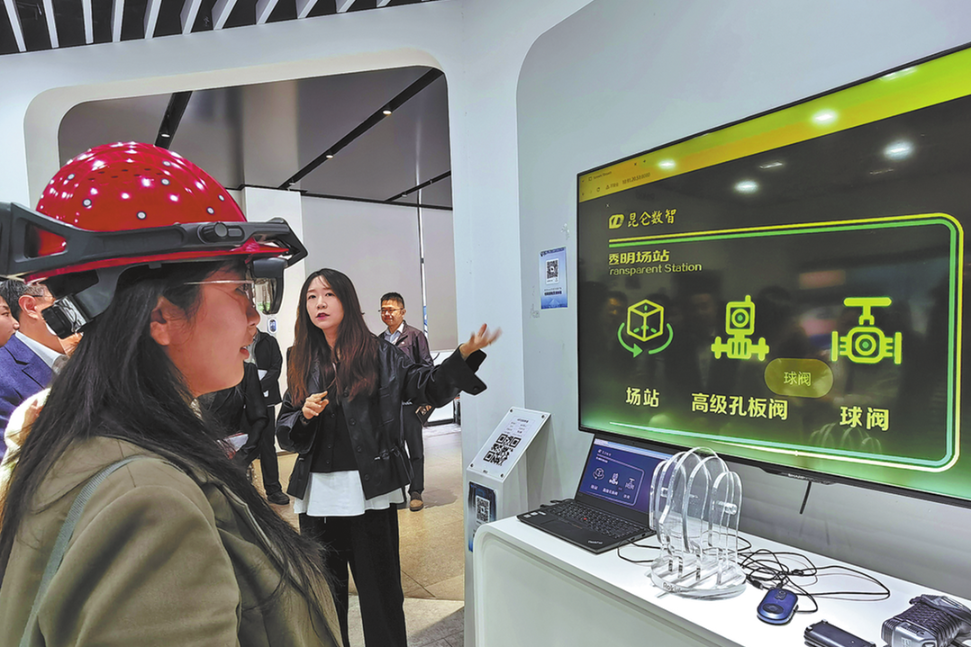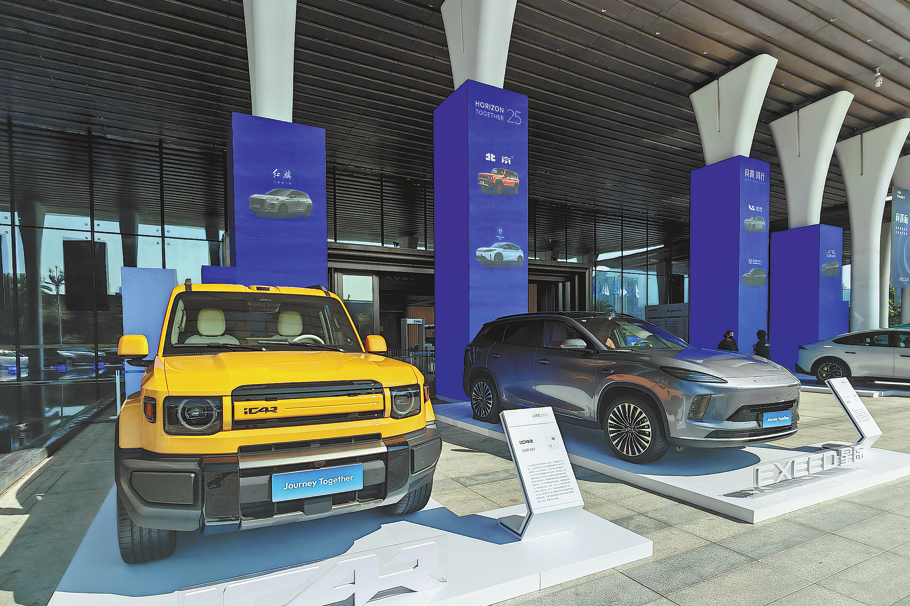Machine maker's cogs keep turning

Liugong machinery picks up foreign expertise and undertakes mergers and acquisitions as it continues to dig up new ground around the world
Few companies openly talk about embarrassing mistakes they have made, but LiuGong Machinery Ltd seems to have few qualms about doing so.
It took about 50 years for the firm to develop from a city workshop in Guangxi to become one of the world's top construction machinery makers, and there were many missteps along the way.
The company tells of the time in 1998 when an Australian company bought a loader from it. Because the loader was equipped with an imported automatic gearbox, the mismatch between it and the supporting system caused many malfunctions. The angry customer set the loader on fire.
In 1999, LiuGong discovered one of its Italian customers had repainted its products once the machines arrived in Italy because the customer says, "the ugly design cannot be changed, and the rusty look is intolerable".
In fact, fundamental changes in LiuGong's business did not come about until 2002, when it started seeking a bigger role in markets abroad, using its 18,000 employees and assets of 30.7 billion yuan ($5.0 billion; 3.6 billion euros).
According to its development strategy, international business should account for 25 percent of its total revenues next year.
LiuGong has more than 400 dealers, seven accessory centers and two production factories across 130 countries and regions today.
By 2012, LiuGong's $580 million market outside China accounted for nearly 30 percent of its sales revenue, an increase of more than 28.4 percent year-on-year.
LiuGong is indisputably a leading exporter of loaders and diggers in China now.
"We must squarely face up to the fact that foreign enterprises coming to China is inevitable," says Wang Xiaohua, board chairman of LiuGong.
"If we dare not dance with the 'wolves' now, we have no chance of winning future competition at home and abroad."
LiuGong president Zeng Anguang says: "LiuGong was liberalized by China's opening-up and reform, and its internationalization evolved from the country's recent rise. LiuGong will have a brighter future as China turns from a big power to a strong power."
Technology innovation and marketing networks are two priorities for Zeng.
The workshop from which LiuGong originated was built in Liuzou city in the Guangxi Zhuang autonomous region in 1958 by workers from an iron and steel factory in Shanghai and a metal structure plant in Xi'an. They were sent by the government to develop Southwest China.
The old generation of Shanghai and Xi'an workers brought their master skills and professionalism to Liuzhou and revived the industrial tradition of the city, a regional center famous for sugar production and machinery industries from the late Qing Dynasty (1644-1911) to the early 1940s. The War of Resistance Against Japanese Aggression (1937-45) and China's civil war from 1946 to 1949 sent the city's industrial development off the rails, but only temporarily.
In the 1980s LiuGong had initial contact with foreign countries.
Zeng visited Caterpillar Inc's factory in the United States for the first time in early 1983 as a young technician working for LiuGong and was impressed. His first job in 1984 upon his return was to translate the introductory book of Caterpillar Inc's centenary history and its annual financial reports into Mandarin.
"LiuGong's technicians regarded themselves as true students and worked hard to learn everything from the international giants at that time," Zeng says.
From 1979 to 1986, Chinese construction machinery enterprises imported more than 120 foreign techniques, thanks to the reform and opening-up of China. Technological cooperation with Caterpillar Inc was one of the projects.
From 1992, China's construction machinery enterprises entered an era of integration, during which many joint ventures were established. After 2001, when China joined the World Trade Organization, joint and cooperative ventures became rare, replaced by sole-proprietorship enterprises from abroad and Chinese enterprises.
The technologies and advanced management models that Chinese enterprises learned from their foreign counterparts improved the overall level of the country's construction machinery.
Caterpillar's experts visited LiuGong in October 1989 and were satisfied with the skills of its workers. They suggested that if LiuGong wanted to improve the quality of its products, it should buy advanced manufacturing equipment.
LiuGong followed the advice and bought from IGM Robotersysteme AG of Austria welding robot installations and numerically controlled machine tools as well as axle shell production lines from Italy and the United States.
This equipment played a crucial role in advancing LiuGong's manufacturing to world class.
LiuGong has never stopped pursuing technological innovation using its own research and development staff, who are now spread around the world.
Xie Ping, an engineer in the hydraulic pressure workshop, has taken part in the research and development work of LiuGong's excavators, loader-diggers, plateau loaders and high-speed loaders since 1986.
"LiuGong technicians have inherited the down-to-earth, hardworking spirit of the old experts from Shanghai and Xi'an," Xie says.
"This is LiuGong's legacy that should be passed down to the young staff."
Railway construction in Tibet created a big market for construction machinery builders in the 1990s.
Xie lived in the Tibet, an plateau, for several years from the late 1990s, conducting experiments to look for solutions to a series of technological problems common in construction machinery above elevations of 4,500 meters and at low temperatures where oxygen is low and ultraviolet radiation is high. In such tough environments, it is hard to start engines, and metals and rubber seal materials wear out rapidly.
Her team found success in 2002 and helped LiuGong make the first plateau loader in the world fit for construction projects in Tibet.
But LiuGong is fully aware of the crucial technological gap that entails a national effort to overcome.
"The digger hydraulic plunger is an area in which we lag behind most of our foreign competitors," says Luo Wei, chief engineer. "The main gap is in the science of materials, which is also generally a weak point for China."
Even now most of LiuGong's diggers employ imported hydraulic plungers.
"This shows our weakness in many fundamental scientific research areas, such as the science behind materials," Luo says.
Mergers and acquisitions became a shortcut for Chinese enterprises to acquire technology and marketing channels, especially after the financial crisis in 2008.
LiuGong's R&D and marketing network has grown robustly with the expansion of its business globally.
LiuGong set up its first overseas marketing company in Australia in 2004. It exported 850 complete machines in 2005, with export revenue of more than $36 million, rising by 162 percent year-on-year. This was when LiuGong first appreciated the value of foreign trade.
In 2006, LiuGong exported 1,455 complete machines, and its export revenue nearly doubled to $67.32 million. The figures rose to 4,284 and $216 million in 2008 and more than 10,000 complete machines and about $600 million yuan last year.
Its North America branch was established in 2008. Its branches in Latin America, Europe, the Asia-Pacific region, the Middle East and South Africa were operationally active by 2011.
LiuGong now has about 200 dealers in more than 100 countries and regions. The foreign market's share in LiuGong's total revenue rose from less than 2 percent about 10 years ago to about 30 percent today.
LiuGong signed a strategic agreement with McKinsey & Co Ltd to launch a new international expansion plan in September 2009.
In October 2011, LiuGong established a joint venture with Guangxi Cummins Industrial Dynamics Corp and Cummins (China) Investment Co Ltd. This produced the first 9.3L non-road engine last March.
Huo Yan and Du Xiaoying contributed to this story.
liyang@chinadaily.com.cn
| LiuGong predicts its construction machinery business will grow in 2014, despite fierce competition at home and abroad. Huo Yan / China Daily |
(China Daily Africa Weekly 03/14/2014 page23)
Today's Top News
- Jimmy Lai found guilty of colluding with foreign forces
- Hong Kong court opens session to deliver verdict on Jimmy Lai's case
- China's economy posts steady growth in Nov
- Death toll rises to 16 in Sydney's Bondi Beach shooting
- Firm stance on opening-up wins praise
- World looks to new engines for growth in 2026































